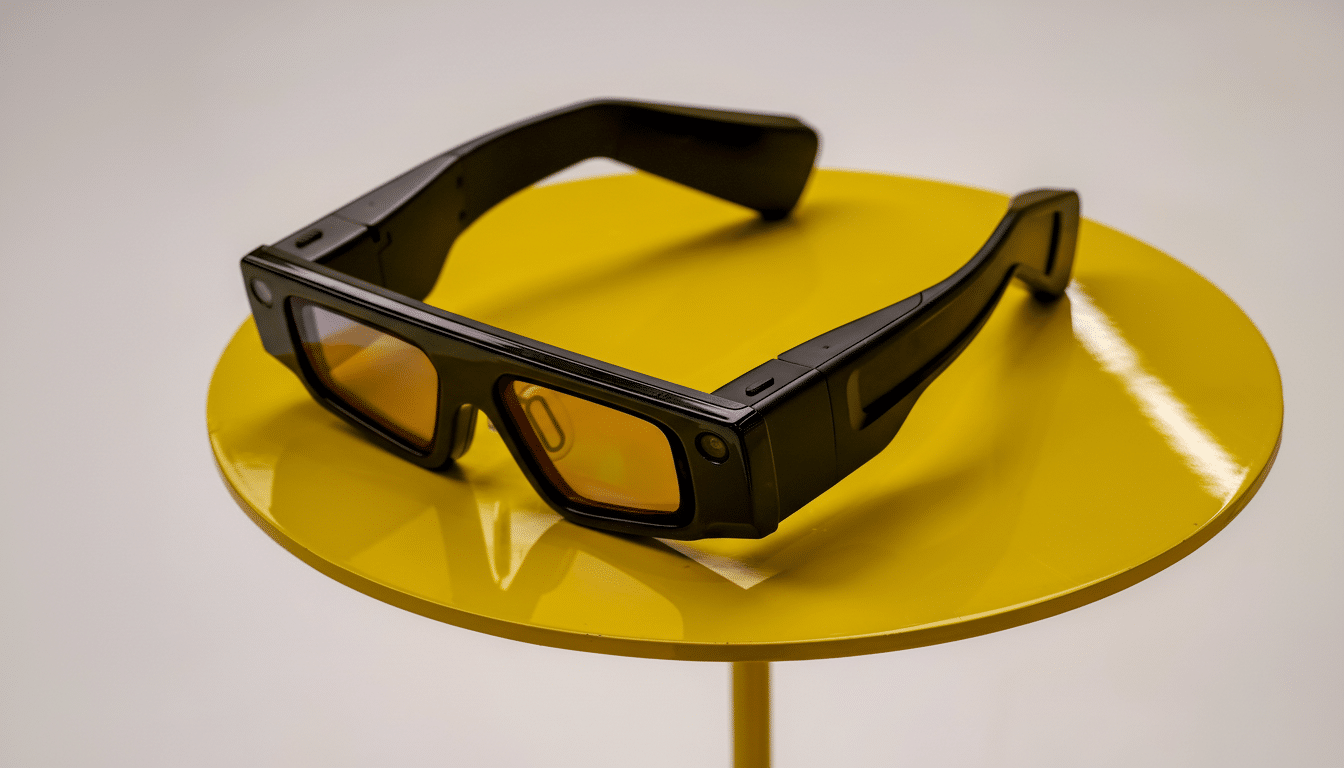Snap is updating its Snap OS 2.0 software for Spectacles AR glasses with a number of new features: most notably full WebXR support, and new lenses that make always-on hands-free entertainment appear in eyes’ view.
The release follows last year’s fifth‑generation Spectacles, which were made available to developers and pave the way for a consumer launch targeted in 2026.

A browser native to and optimized for face-worn devices
Snap’s inaugural on‑device browser will be fast, frugal and simple. The company says it tuned page-load performance and power consumption, in recognition that the two main limiting factors for AR wearables are battery and thermals. In practice, fewer waits, a steadier frame rate and more time between charges.
The new home screen features glanceable widgets and bookmarks, a fresh toolbar featuring easy access to typed or spoken URLs, as well as supporting for fast history navigation, and of course an ever-so-tasty refresh button. Snap is also onboard, allowing window resizing—an underrated feature that mimics laptop ergonomics by enabling you to scale a page for context or read without parachuting from the task in question.
Put more broadly, a native browser makes Spectacles feel less like a face-worn camera and more like a first-class computation surface. It lessens dependence on a phone and helps make everyday actions — checking out a menu, reading an article, summoning directions — feel native to the glass.
WebXR transforms the web into an AR app store
The silent driver here is of course the support for WebXR, the W3C standard that enables immersive experiences on the web. Thanks to WebXR, Spectacles can load interactive AR scenes directly from a URL – no downloads, app updates or store approvals needed. That’s one victory for the developers and brands who already build with frameworks like Three. js or Babylon. js and want immediate distribution.
It also more closely ties Spectacles to the greater ecosystem. Browsers like Chrome on Android and its Quest Browser already support WebXR, a portable target for developers to aim for that stretches across phones and headsets. For users, it should all feel light, like opening a product page that starts a try‑on or clicking in through to a museum’s AR tour from its site.
The strategic play: Snap reduces friction by betting on the web. Installation prompts murder engagement on mobile; in AR, where attention is scarcer still, having to go through that step is table stakes.

New lenses for always-on hands-free viewing
Snap OS 2.0 unveils a Spotlight Lens that sticks creator vios in your real space. While you get stuff done or roam about, you can stick a clip to the surface where something is happening or have the video follow as you walk around. The portrait-style field of view on Spectacles so naturally accommodates vertical video that it reduces letterboxing and makes keeping up with content without constantly looking down at a phone feel possible.
A new Gallery Lens lets you pull up your Spectacles captures on an interactive carousel to relive moments and curate them to favourites for sharing. It’s a tiny quality‑of‑life feature that cuts down on the hop between capture, review and posting — important on devices which will be worn all day.
Rounding out the update is Travel Mode, which stabilizes AR content and tracking while in motion (think: on a train or airplane). It’s notoriously difficult to do consistent anchoring when sensors are fighting vibration and speed; the dedicated mode suggests that Snap is tuning at the OS level to make sure graphics stay put.
Implications for developers—and rivals
The combination of the browser and WebXR is a distribution unlock for developers. Prototyping live on public/private URL Updates go live instantly; Reutilize existing web stacks. Look for early experiments in ecommerce try‑ons, location‑aware scavenger hunts and media overlays that enhance live events — use cases which don’t require a heavyweight native app.
For competitors, timing matters. The announcement comes just as the industry prepares to debut new smart glasses and AI features from big platforms. Where other devices rely on companion apps or are rooted in audio-first experiences, Snap is pioneering a vision where the web could be your platform for AR content.
There are questions open — how Snap will handle privacy for voice input, the extent of enterprise policies around the browser and how Snap will make money off web-driven AR at scale. But Snap OS 2.0 represents a substantial move toward everyday eyewear that operates as a browser-first computer, not merely as a wearable camera. If Snap can actually maintain those performance and power improvements, then Spectacles could turn into the best way to put the immersive web in front of your eyes without friction.

